- Growing Pear Trees in the Garden
- 1. Choose the Right Variety
- 2. Planting
- 3. Pruning
- 4. Fertilizing
- 5. Watering
- 6. Pest and Disease Control
- 7. Harvesting
- Choosing the Right Pear Variety
- Climate and Growing Conditions
- Taste and Texture
- Pollination
- Disease Resistance
- Tips for Planting Pear Trees
- 1. Choose the Right Location
- 2. Prepare the Soil
- 3. Planting the Tree
- 4. Pruning
- 5. Watering and Mulching
- 6. Fertilizing
- 7. Pest and Disease Control
- 8. Harvesting
- Pruning and Caring for Pear Trees
- 1. Pruning
- 2. Training
- 3. Fertilizing
- 4. Watering
- 5. Pest and Disease Control
- Common Pest and Disease Issues with Pear Trees
- Pest Issues
- Disease Issues
- Prevention and Control
- Harvesting and Storing Pears
- 1. Determine when to harvest:
- 2. Harvesting techniques:
- 3. Storing the harvested pears:
- Culinary Uses of Pears
- Sweet Preparations
- Savory Dishes
- Beverages
- Question-answer:
- How can I grow pears in my garden?
- What are some common types of pears?
- Can I grow pears in a small garden?
- How long does it take for a pear tree to bear fruit?
- How do I know when pears are ripe and ready to harvest?
- Video: Easy way to grow pear trees from pear fruit | unique tricks and formula |
Pear trees are a popular choice for home gardeners due to their beauty and ability to produce delicious fruit. Whether you’re a beginner or an experienced gardener, pears are a great addition to any garden. In this article, we will explore the different types and varieties of pears that you can grow, and provide tips for planting and caring for pear trees.
There are many different types of pears to choose from, each with its own unique flavor and texture. Some of the most popular varieties include the Bartlett, Anjou, and Bosc. The Bartlett pear is a classic choice, known for its sweet and juicy flesh. The Anjou pear is slightly sweeter and has a smooth texture, while the Bosc pear has a more firm and dense flesh, making it ideal for baking and cooking.
When it comes to growing pear trees, it’s important to choose the right location and provide proper care. Pears thrive in well-drained soil and full sun, so make sure to choose a sunny spot in your garden. It’s also important to plant your pear trees in pairs, as they require cross-pollination to produce fruit. Be sure to space your trees at least 10-15 feet apart to allow for proper air circulation.
To care for your pear trees, water them regularly, especially during dry spells. Mulching around the base of the tree can help retain moisture and control weeds. Prune your trees in late winter or early spring to remove any dead or damaged branches, and to shape the tree for optimal growth. Applying a balanced fertilizer in the early spring can also help promote healthy growth.
Whether you’re looking to add a fruit tree to your garden or expand your existing orchard, pears are a versatile and delicious choice. With their wide variety of flavors and textures, there’s a pear variety for everyone. By following the proper planting and care techniques, you can enjoy a bountiful harvest of sweet and juicy pears straight from your own garden.
Growing Pear Trees in the Garden
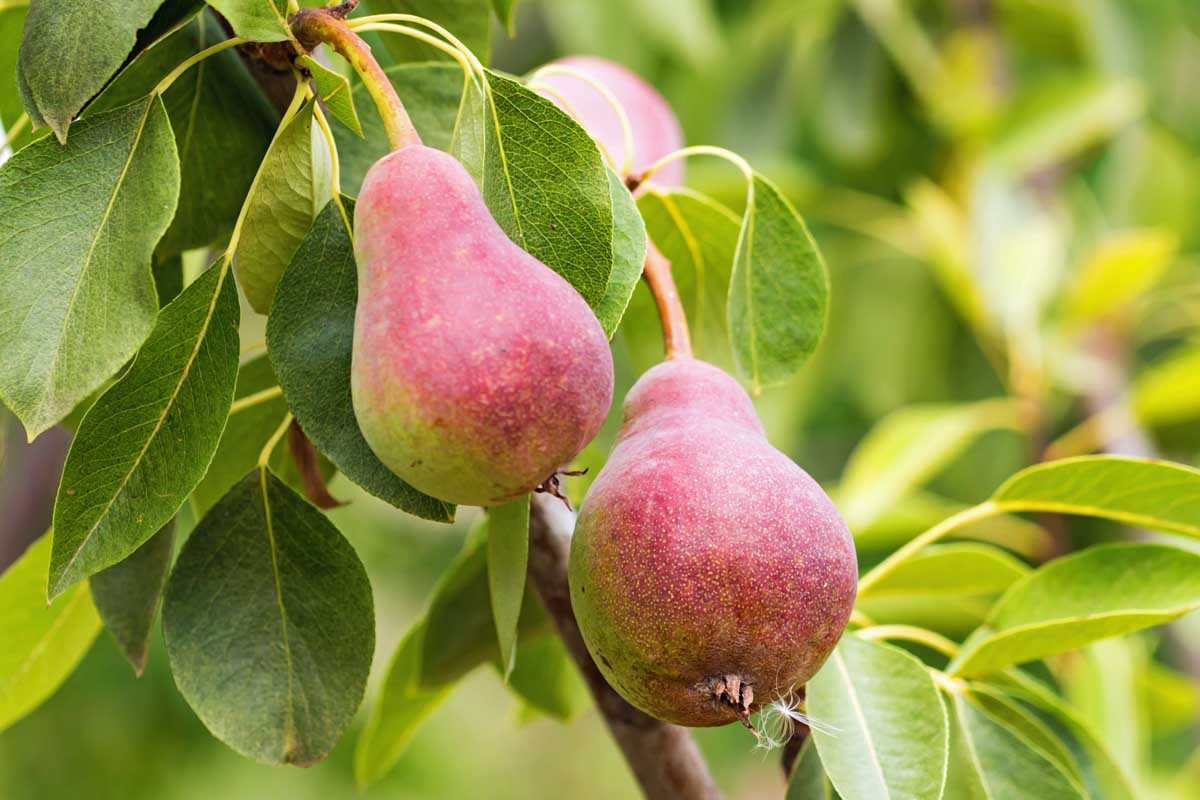
Pear trees are a popular choice for gardens due to their beautiful blossoms in spring and delicious fruit in late summer and fall. With proper care, you can successfully grow pear trees in your garden and enjoy a bountiful harvest. Here are some tips to help you grow pear trees in your garden:
1. Choose the Right Variety
There are many types and varieties of pears available, so choose one that is well-suited to your climate and personal preferences. Some popular pear varieties include Bartlett, Anjou, Bosc, and Comice. Consider factors such as taste, texture, and ripening time when making your selection.
2. Planting
Plant your pear tree in a sunny location with well-draining soil. Dig a hole that is wider and deeper than the tree’s root ball. Place the tree in the hole, ensuring that the bud union (the swollen area where the pear tree was grafted onto the rootstock) is above the soil line. Backfill the hole with soil, gently firming it around the tree. Water the newly planted tree thoroughly.
3. Pruning
Pruning is important for pear trees to maintain their shape, promote air circulation, and remove any dead or diseased branches. Prune your pear tree during the dormant season (late winter to early spring) before new growth begins. Remove any branches that are crossing or crowded, as well as any suckers or watersprouts.
4. Fertilizing
Pear trees benefit from annual fertilization to ensure healthy growth and fruit production. Apply a balanced fertilizer in early spring before new growth starts. Follow the package instructions for the specific fertilizer you are using, as the application rate may vary.
5. Watering
Proper watering is essential for pear trees, especially during dry periods. Water deeply and infrequently, allowing the soil to dry out slightly between waterings. A general rule of thumb is to provide about 1 inch of water per week, either through rainfall or supplemental watering.
6. Pest and Disease Control
Pear trees can be susceptible to pests and diseases. Monitor your tree regularly for signs of pests such as aphids, pear psylla, and codling moth. Use appropriate organic or chemical controls if necessary. Diseases like fire blight and pear rust can also affect pear trees, so take preventive measures and treat accordingly if you notice any symptoms.
7. Harvesting
Pears are typically harvested when they are still firm but have reached their full size and color. Check the fruit regularly for ripeness by gently pressing the flesh near the stem. If it gives slightly, the pear is ready to be picked. Avoid waiting until the fruit is soft on the tree, as this will result in overripening and a mushy texture.
By following these tips, you can successfully grow pear trees in your garden and enjoy the sweet and juicy fruits they produce. Remember to provide regular care and maintenance to ensure the health and productivity of your pear tree.
Choosing the Right Pear Variety
When it comes to growing pears in your garden, choosing the right variety is key to ensuring a successful harvest. With so many different types and varieties available, it can be overwhelming to decide which one is best for you. In this guide, we will explore some important factors to consider when selecting a pear variety.
Climate and Growing Conditions

One of the first things to consider is your climate and growing conditions. Pears come in two main types – European and Asian. European pears are best suited for temperate climates with cool summers and mild winters. Asian pears, on the other hand, prefer a warmer climate.
Additionally, consider the soil conditions in your garden. Pears thrive in well-drained soil with a pH level of around 6.0 to 7.0. If your soil is heavy clay or extremely sandy, you may need to amend it before planting.
Taste and Texture
Another important factor to consider is the taste and texture of the pear variety. Some pears are sweet and juicy, while others are crisp and tart. Determine your preferred flavor profile and choose a variety accordingly.
Additionally, consider the texture of the pear. Some varieties have a smooth, buttery texture, while others are more grainy. If you plan to use the pears for cooking or baking, a firmer variety may be more suitable.
Pollination
Pears are not self-pollinating, so you will need at least two different pear varieties for cross-pollination and fruit set. Make sure to choose varieties that bloom at the same time to ensure successful pollination. Alternatively, some pear varieties are partially self-fertile and can set fruit with their own pollen, but cross-pollination will still result in a larger yield.
Disease Resistance
Finally, consider the disease resistance of the pear variety. Some varieties are more susceptible to certain diseases, such as fire blight or scab. If you live in an area where these diseases are common, look for varieties that are resistant or have some tolerance to them.
By considering these factors – climate and growing conditions, taste and texture, pollination, and disease resistance – you can choose the right pear variety for your garden. Remember to also consider the space available in your garden and the size of the mature tree, as some varieties can grow quite large. Happy pear growing!
Tips for Planting Pear Trees
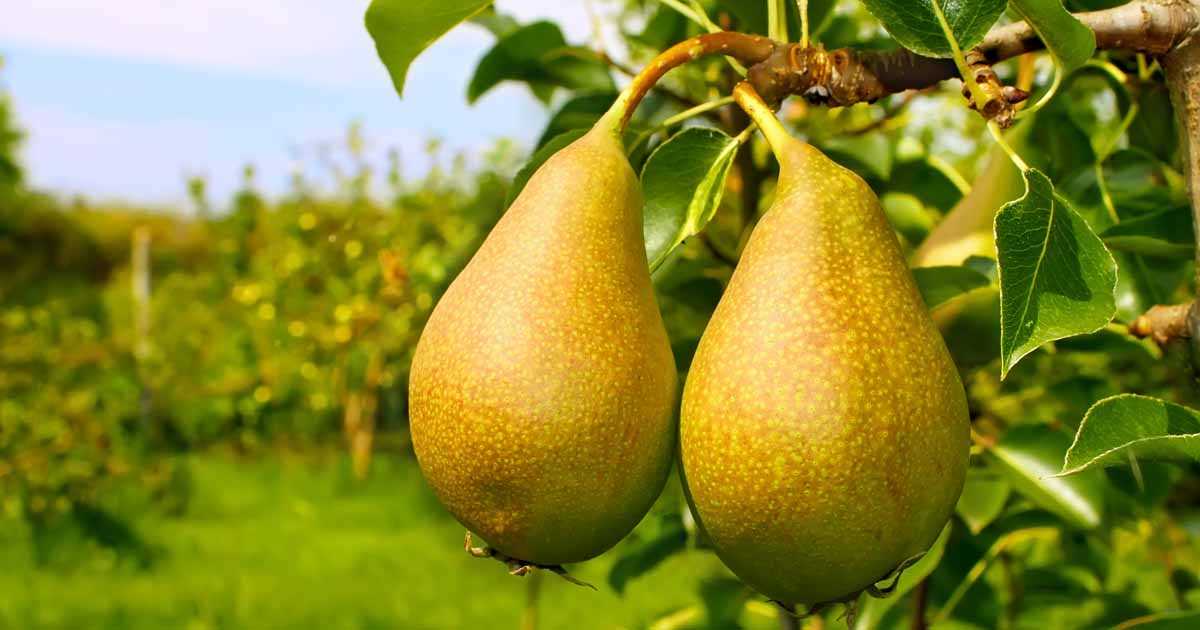
1. Choose the Right Location
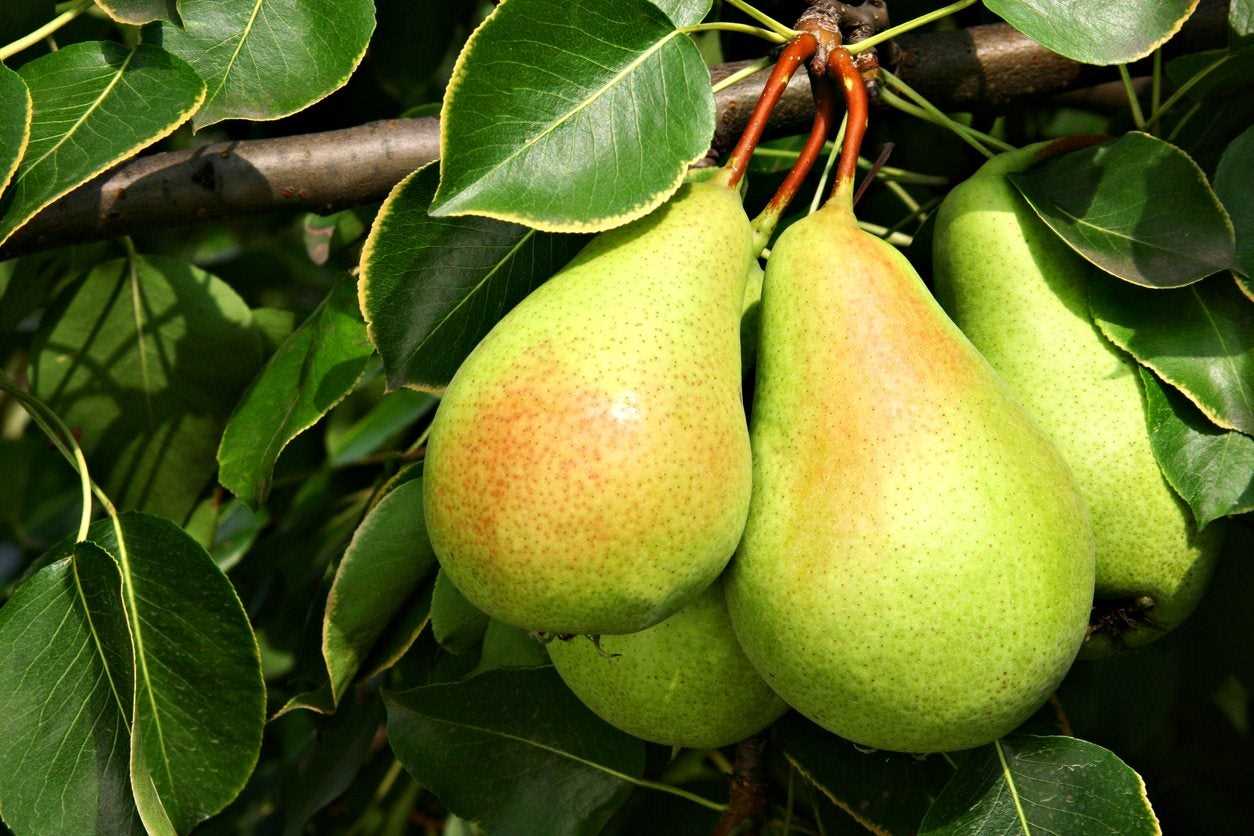
When planting pear trees, it is important to select a location that provides full sun exposure and well-drained soil. Pear trees thrive in a location with at least 6 hours of direct sunlight each day.
2. Prepare the Soil
Prior to planting, prepare the soil by removing any weeds, rocks, or debris. Dig a hole that is wide and deep enough to accommodate the tree’s roots. Loosen the soil in the hole and mix in organic matter, such as compost or aged manure, to improve drainage and fertility.
3. Planting the Tree
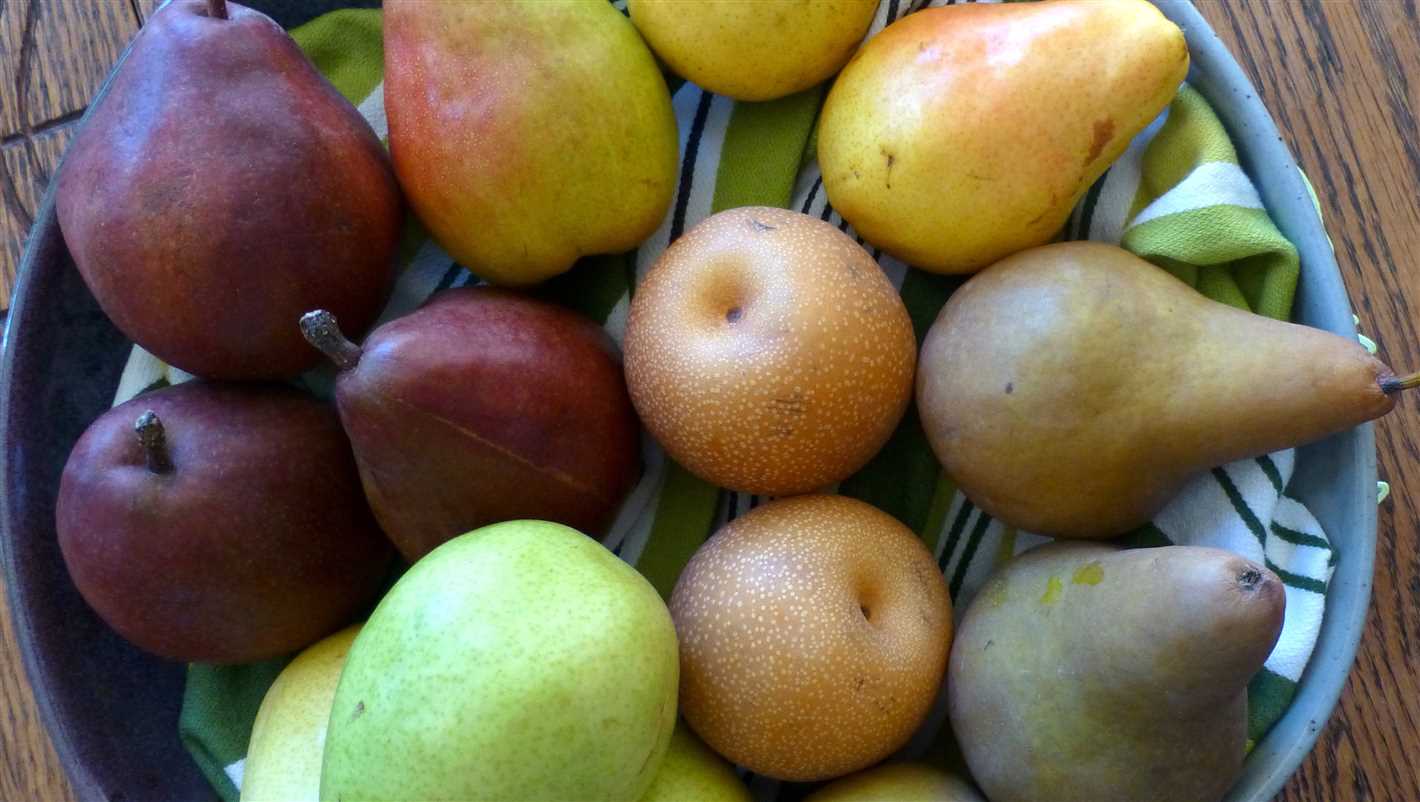
Place the pear tree in the center of the hole, making sure that the graft union (the swollen area where the tree was grafted onto the rootstock) is at least 2 inches above the soil line. Gently spread out the roots and backfill the hole with soil, firming it gently around the tree. Water thoroughly after planting to settle the soil.
4. Pruning
After planting, prune the tree by removing any broken or damaged branches, as well as any branches that are crossing or rubbing against each other. This will help shape the tree and promote healthy growth.
5. Watering and Mulching
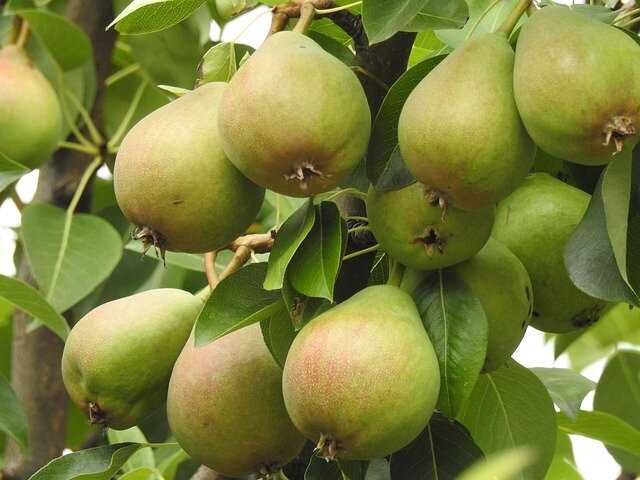
Water the newly planted pear tree regularly, especially during the first year. Keep the soil consistently moist but not waterlogged. Apply a layer of organic mulch around the base of the tree to help retain moisture and suppress weeds.
6. Fertilizing
Feed the pear tree with a balanced fertilizer in early spring, before new growth begins. Follow the instructions on the fertilizer packaging for the appropriate application rate. Avoid over-fertilizing, as this can lead to excessive vegetative growth at the expense of fruit production.
7. Pest and Disease Control
Monitor the pear tree for common pests and diseases, such as aphids, pear psylla, and fire blight. Use appropriate pest control methods, such as integrated pest management, to manage infestations. Regularly inspect the tree for signs of disease, and promptly remove and destroy any infected branches to prevent the spread of pathogens.
8. Harvesting
Depending on the variety, pears can be harvested when they are firm but still slightly green. Allow the pears to ripen fully off the tree at room temperature before enjoying.
- Choose a location with full sun exposure and well-drained soil.
- Prepare the soil by removing weeds and adding organic matter.
- Plant the pear tree with the graft union above the soil line.
- Prune the tree to remove damaged or crossing branches.
- Water regularly and apply mulch to retain moisture.
- Fertilize in early spring with a balanced fertilizer.
- Monitor for pests and diseases, and use appropriate control methods.
- Harvest pears when they are firm and ripe off the tree.
Pruning and Caring for Pear Trees
Proper pruning and care can help your pear tree thrive and produce abundant fruit. Here are some tips on how to prune and care for pear trees:
1. Pruning
- Start by pruning your pear tree during its dormant season, which is usually in late winter or early spring.
- Remove any dead, damaged, or diseased branches. Prune back to healthy wood.
- Thin out crowded branches to improve air circulation and sunlight penetration.
- Prune any branches that are crossing or rubbing against each other.
- Keep the center of the tree open to allow for good air flow and light distribution.
2. Training
- Train your young pear tree to have a strong central leader. Prune any competing leaders and encourage a single, straight trunk.
- As the tree grows, prune any branches that are growing too low or at an awkward angle.
- Use training techniques such as limb spreading or tying to help shape the tree and promote good branch structure.
3. Fertilizing
- Feed your pear tree with a balanced fertilizer in early spring, before the start of the growing season.
- Avoid over-fertilizing, as this can lead to excessive vegetative growth and reduced fruit production.
- Consider getting your soil tested to determine if any specific nutrients are lacking. Adjust your fertilizer application accordingly.
4. Watering
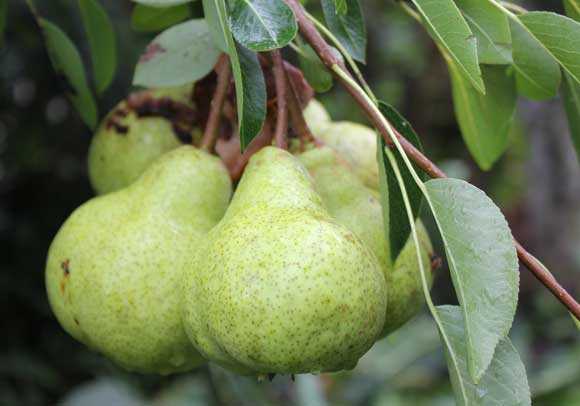
- Provide your pear tree with deep, regular watering, especially during dry spells.
- Aim to water the tree thoroughly, ensuring the water reaches the tree’s roots.
- Avoid over-watering, as this can lead to root rot and other problems. Allow the soil to dry slightly between waterings.
5. Pest and Disease Control
- Monitor your pear tree regularly for signs of pests and diseases.
- Use organic pest control methods whenever possible, such as handpicking pests or using insecticidal soaps.
- If necessary, use appropriate pesticides or fungicides following the manufacturer’s instructions.
By following these pruning and care tips, you can help your pear tree stay healthy and productive for years to come.
Common Pest and Disease Issues with Pear Trees
Pear trees are susceptible to a variety of pests and diseases that can negatively impact their health and productivity. It’s important for gardeners and growers to be aware of these issues and take appropriate measures to prevent and control them.
Pest Issues
1. Codling Moth: This is one of the most common pests that affect pear trees. The larvae of codling moths feed on the fruit, leaving behind brown, tunnel-like tracks. To control codling moths, use pheromone traps and consider using organic insecticides.
2. Pear Psylla: These small, jumping insects feed on pear leaves and can cause leaf distortion and discoloration. Regularly inspect your pear trees for signs of pear psylla infestation, and use insecticidal soaps or oils to control them.
3. Aphids: Aphids are tiny insects that suck the sap from pear tree leaves, causing them to curl and distort. Use insecticidal soaps or natural predators like ladybugs to control aphids.
Disease Issues
1. Fire Blight: Fire blight is a bacterial disease that affects pears and other fruit trees. It causes wilting, blackening of blossoms, and cankers on branches. Prune infected branches and use copper-based sprays to control fire blight.
2. Pear Scab: Pear scab is a fungal disease that causes dark, scaly lesions on pear tree leaves and fruit. Prune infected branches and use fungicides to control pear scab.
3. Pear Rust: Pear rust is a fungal disease that results in orange or rusty spots on pear tree leaves and fruit. Prune infected branches and use fungicides to control pear rust.
Prevention and Control
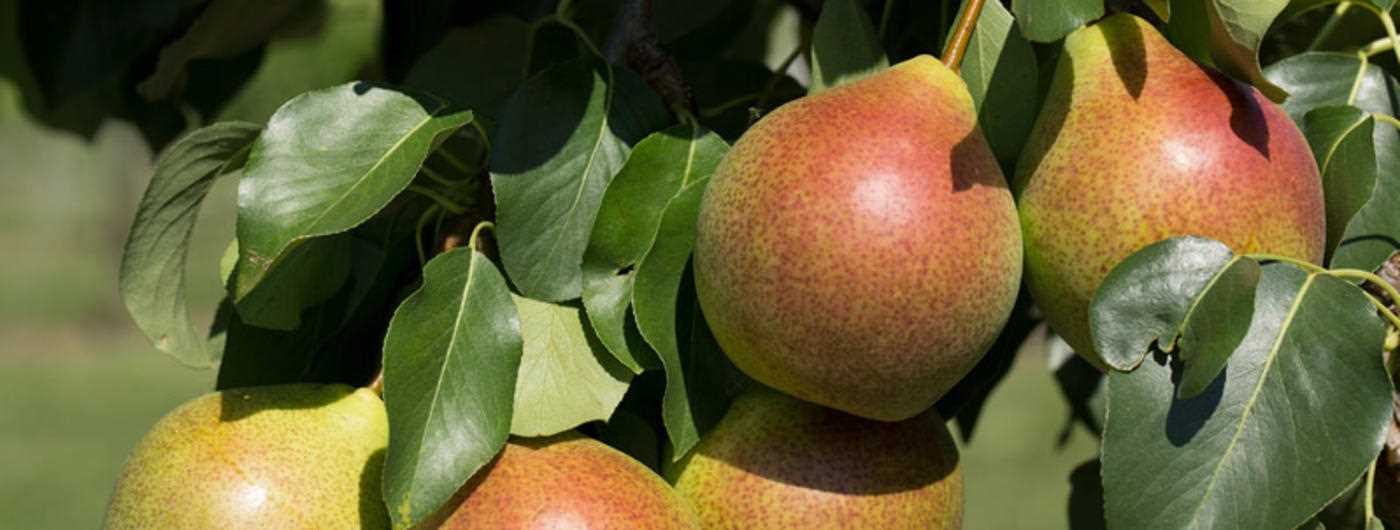
To prevent and control pest and disease issues with pear trees, it’s important to follow these practices:
- Choose resistant pear tree varieties.
- Keep the area around the tree clean and free of fallen leaves and debris.
- Regularly inspect your pear trees for pest and disease signs.
- Prune infected branches and dispose of them properly.
- Use organic insecticides and fungicides when necessary.
- Encourage natural predators like ladybugs to control pests.
- Properly water and fertilize your pear trees to promote their overall health.
By implementing these preventive measures and taking prompt action when pest or disease issues arise, you can keep your pear trees in good health and enjoy a bountiful harvest.
Harvesting and Storing Pears
Harvesting pears at the right time is crucial to ensure the best quality and flavor. Pears should be picked when they are mature but still firm. Here are some tips for harvesting and storing pears:
1. Determine when to harvest:
- Check the color of the pears: Pears change color as they ripen. Depending on the variety, mature pears may have a yellow, green, or red hue.
- Perform a taste test: Gently press the neck of a pear near the stem. If it gives slightly, it is ready to harvest.
- Consider the harvesting season: Different pear varieties have different harvesting times. Consult a local agriculture expert or orchardist for specific information about when to harvest in your area.
2. Harvesting techniques:
- Use a ladder or reach tool: Pears are often located high up on the tree, so you may need a ladder or a long-reaching tool to pick them safely.
- Twist and lift: To harvest a pear, twist it gently and lift it upwards. Be careful not to pull or yank it, as this can damage the fruit or the tree.
- Handle with care: Pears bruise easily, so handle them gently to avoid any damage.
3. Storing the harvested pears:
- Sort the pears: Remove any damaged or overripe pears from the batch. Only store the healthy ones.
- Store in a cool place: Pears can be stored in a cool, well-ventilated area like a basement or a refrigerator. The temperature should be around 30 to 40 degrees Fahrenheit (0 to 4 degrees Celsius).
- Avoid direct contact: To prevent bruising, do not let the pears come into direct contact with each other or with other fruits.
- Check regularly: Check the stored pears regularly for any signs of spoilage or rotting. Remove any damaged pears to prevent them from affecting the rest of the batch.
By following these guidelines, you can ensure that your harvested pears stay fresh and delicious for a longer period of time. Enjoy the fruits of your labor!
Culinary Uses of Pears
Pears are delicious and versatile fruits that can be used in a variety of culinary preparations. Whether you’re using them in sweet desserts or savory dishes, pears add a unique flavor and texture to your recipes.
Sweet Preparations
Pears are commonly used in desserts and sweet preparations. Here are some popular ways to use pears in sweet dishes:
- Fresh: Enjoy pears as they are, sliced and served fresh. The natural sweetness and juicy texture make them a perfect snack.
- Pies and Tarts: Pears make a delicious filling for pies and tarts. Whether you use them alone or combine them with other fruits like apples or berries, pears add a delightful flavor.
- Crumbles: Make a pear crumble by layering sliced pears with a buttery streusel topping. Bake until golden and serve with a scoop of vanilla ice cream.
- Poached: Poaching pears in a spiced syrup is a classic dessert preparation. The pears become tender and infused with flavors like cinnamon, nutmeg, and vanilla.
- Jams and Preserves: Turn your surplus of ripe pears into homemade jams and preserves. Spread them on toast or use them as a filling for pastries.
Savory Dishes
Pears can also be used in savory dishes, adding a touch of sweetness and depth of flavor. Here are some savory ways to incorporate pears into your cooking:
- Salads: Add sliced or cubed pears to your green salads for a burst of sweetness. They pair well with ingredients like arugula, walnuts, blue cheese, and balsamic vinaigrette.
- Pizza Toppings: Thinly sliced pears make a unique and delicious topping for pizza. Combine them with ingredients like prosciutto, goat cheese, and caramelized onions for an unforgettable flavor combination.
- Soups: Pears can be pureed and added to soups to enhance the flavor and create a creamy texture. They work especially well in bisques and butternut squash soups.
- Sauces and Glazes: Use pears to create a fruity sauce or glaze for your meat dishes. They add a touch of sweetness and complexity that complements poultry, pork, and even game meats.
Beverages
Pears can also be used in beverages, both alcoholic and non-alcoholic.
- Smoothies: Blend pears with other fruits, yogurt, and a liquid of your choice to create a refreshing and nutritious smoothie.
- Cocktails: Use pear juice or puree to create delicious cocktails like pear martinis or pear mojitos. They add a natural sweetness and delicate flavor.
- Tea: Infuse pear slices or peels in hot water to make a naturally sweet and aromatic pear tea.
As you can see, pears are incredibly versatile and can be used in a wide range of culinary preparations. Experiment with different recipes and enjoy the unique flavor and texture that pears bring to your dishes.
Question-answer:
How can I grow pears in my garden?
Growing pears in your garden requires a few steps. First, choose a suitable location with full sun and well-draining soil. Dig a hole that is wide and deep enough to accommodate the root system of the pear tree. Place the tree in the hole, making sure the bud union is above ground level. Backfill the hole with soil, tamping it down gently. Water the tree thoroughly after planting and continue to water regularly throughout the growing season. Prune the tree in late winter or early spring to remove any dead or diseased branches and to shape the tree. Fertilize the tree according to the needs of the specific variety. Finally, be patient and wait for the tree to produce delicious pears!
What are some common types of pears?
There are several common types of pears that you can grow in your garden. Some popular varieties include Bartlett, Anjou, Bosc, Comice, and Conference. Bartlett pears are juicy and sweet with a smooth texture, while Anjou pears are firm and mildly sweet. Bosc pears have a distinct flavor and a crisp texture, while Comice pears are very juicy and have a rich, buttery flavor. Conference pears are firm and have a sweet, tangy taste. Each variety has its own unique characteristics, so you can choose the one that suits your taste preferences.
Can I grow pears in a small garden?
Yes, it is possible to grow pears in a small garden. Some varieties of pears are more suitable for small gardens because they have a compact size. For example, the mini pear tree varieties such as “Doyenne du Comice” and “Williams Bon Chretien” are perfect for small spaces. Additionally, pears can be grown in containers, allowing you to have a pear tree even if you have limited garden space. Just make sure to choose a dwarf or semi-dwarf variety that is suitable for container gardening.
How long does it take for a pear tree to bear fruit?
The time it takes for a pear tree to bear fruit can vary depending on several factors, such as the variety of pear tree, the age of the tree when planted, and the growing conditions. In general, most pear trees start to bear fruit 3 to 5 years after planting. However, some varieties may take longer, up to 7 years, to produce the first harvest. It’s important to be patient and provide the tree with proper care and maintenance during this time to ensure healthy fruit production in the future.
How do I know when pears are ripe and ready to harvest?
Determining when pears are ripe and ready to harvest can be a bit tricky. Pears are unique because they are one of the few fruits that don’t ripen on the tree. Instead, they need to be picked when they are still firm and then allowed to ripen off the tree. To check if a pear is ripe, gently press your thumb near the stem. If it gives slightly, the pear is likely ripe. You can also check the color and fragrance of the pear. Pears will change color from green to yellow or red as they ripen, and they will develop a sweet fragrance. Once you’ve picked them, store the pears at room temperature until they reach the desired ripeness.







